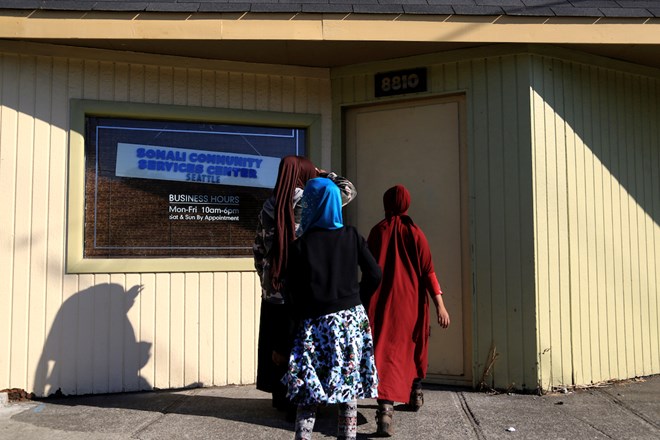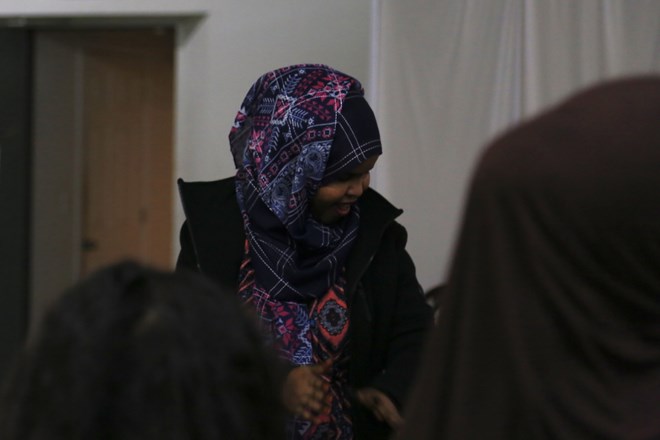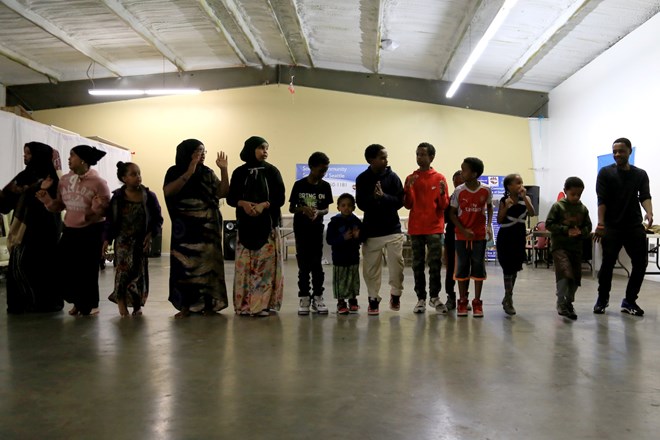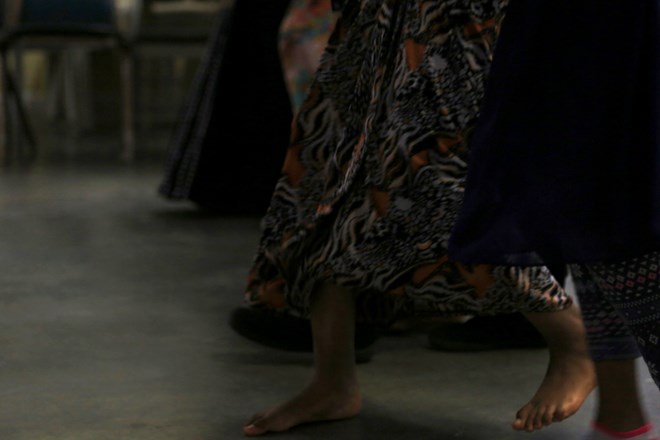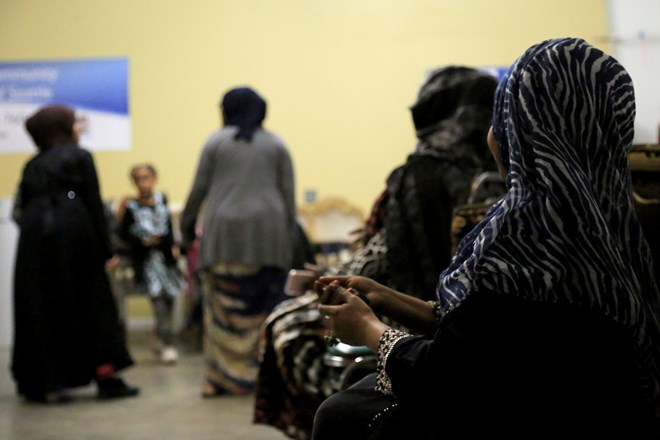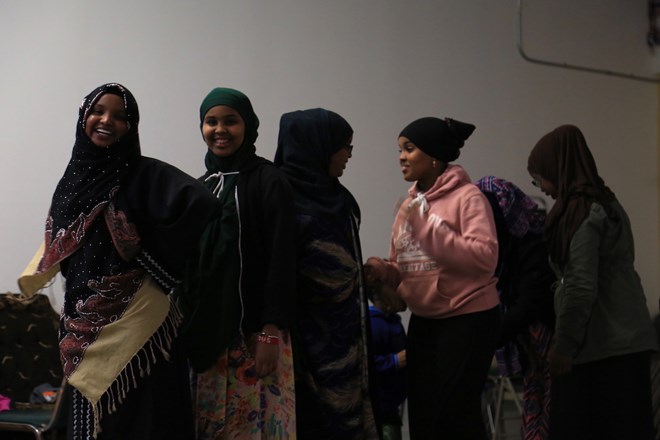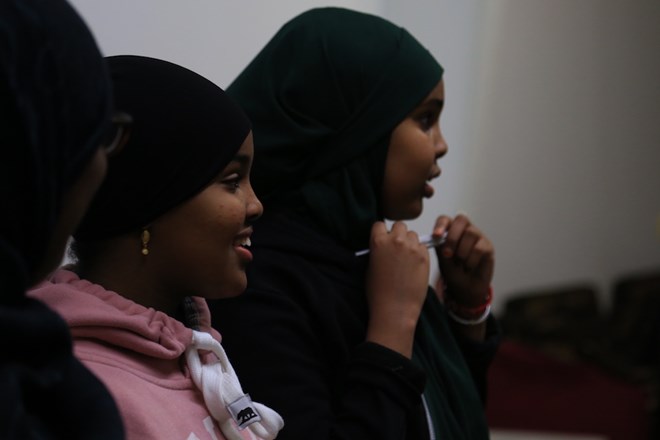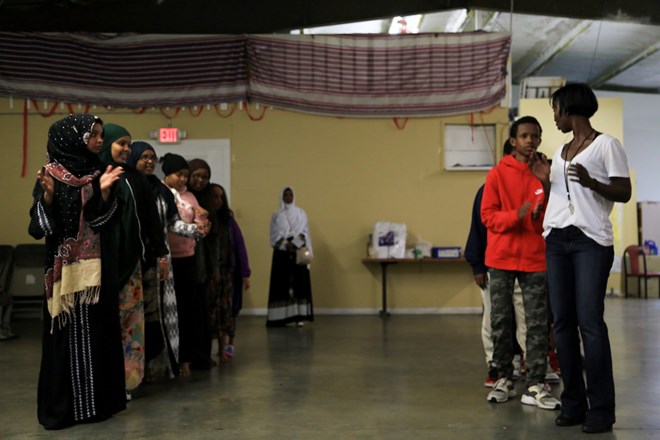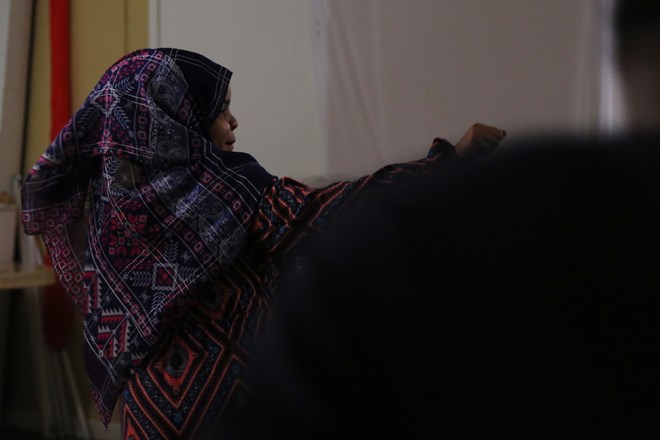
Thursday March 8, 2018
By Ester Ouli Kim 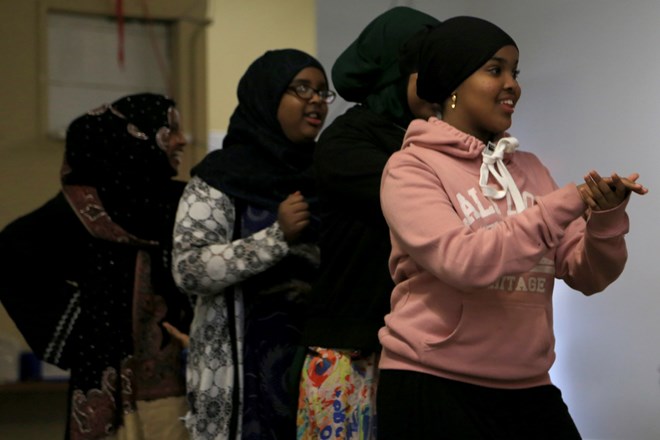 Suweyda Bahir stands in the front and looks to her dance instructor for direction at the first of many practices to come. “American, they are, my kids,” Esther said. Through activities like learning this dance, Esther’s children learn more about Somali culture. The youth at the community center are practicing a modern version of a traditional Somali dance that is often used at weddings and various celebrations. (Photo by Ester Ouli Kim.)
Suweyda Bahir stands in the front and looks to her dance instructor for direction at the first of many practices to come. “American, they are, my kids,” Esther said. Through activities like learning this dance, Esther’s children learn more about Somali culture. The youth at the community center are practicing a modern version of a traditional Somali dance that is often used at weddings and various celebrations. (Photo by Ester Ouli Kim.)
Hodan “Esther” Bahir came to the United States as a Somali refugee. Because of the war in Somalia, she lived in Kenya for five years before coming to the United States with her family in 1999 when she was 15-years-old.
advertisements
Today, Esther has five children born in the United States and became a U.S. citizen herself in 2008. “I’m so happy,” Esther said repeatedly as she described what it was like to call a new country her home.Esther and her children are American and they are also Somali.
At the Somali Community Services Center in Rainier Beach, Esther and her children connect both cultures through dance. Esther said American culture is strong but she still shares Somali culture with her children. “That’s why I bring [them] here,” Esther said.
